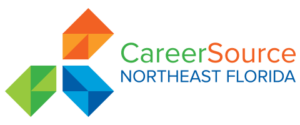Oct. 16, 2020 (Courtesy of the Jacksonville Business Journal)
Hundreds of thousands of businesses that applied for the Small Business Administration’s Economic Injury Disaster Loan program were ultimately given less than they needed, according to a Government Accountability Office review of the program.
When the SBA first started providing loans in the middle of March, it limited the loans to six months of working capital, capping the amounts at $500,000 even though the program was originally being advertised to cover loans of up to $2 million. The small business agency then lowered the loan limit to just $15,000 on April 3, but reversed that decision a few days later. On May 4, the agency lowered the loan limit to $150,000, where it has remained since.
That cap meant that many businesses did not get loans for the amount of the actual economic injury, according to the GAO. In all, the SBA approved 7,000 Economic Injury Disaster Loans for $500,000 and another 459,000 loans capped at $150,000 each, when the economic injury in those cases was greater than that, GAO said in its report.
The program also rolled out at a time when the SBA’s Paycheck Protection Program loans were getting swamped with applicants, and its first pot of PPP funding was running out in a matter of days. But the EIDL, on the other hand, did not end up being what small businesses hoped it would be, according to one expert.
“The program was oversold and underdelivered from the get-go back in April,” said Beth Milito, senior executive counsel for the National Federation of Independent Business. “We do still have members that have applied for EIDL loans and have still not received the money.”
Milito stressed that these loans were vital for businesses that had large nonpayroll expenses that would not have been eligible for PPP loan forgiveness. But despite small business groups pushing the SBA to lift the EIDL’s caps — caps that the agency did not disclose early on — those limits have not moved.
Another national small business group, Main Street Alliance, also saw through a survey of its members that many did not get the EIDL amounts they had applied for. Of those who applied to that program, the group found that 21% said they did not get the desired amount, while 13% said they received no EIDL loan at all.
And of those who received no dollars, about 47% said they received no explanation as to why their loan applications were rejected.
“The EIDL program was severely underfunded from the beginning, causing massive delays and confusion as the SBA stopped and started and capped its program,” said Sarah Crozier, senior communications manager for Main Street Alliance, stressing that Congress needs to expand grant programs to small businesses as outlined in the updated version of the HEROES Act, which passed the House on Monday. “We need better, nondebt-based products for small businesses. The EIDL was one piece of a complicated, too-small-to-fit-the-scale solution to a lengthening and urgent crisis.”
But the GAO report showed that the demand for the EIDL dollars was tremendous.
As of Aug. 22, the SBA had received about 14.5 million applications for EIDL loans, and approved about 3.5 million of those, totaling about $184 billion in value, or about $53,000 on average for individual loans, according to the agency’s own data. The SBA said it has approved more loans for Covid-19 than all other disasters in its history combined.
And small businesses waited a long time for those loans to be processed. It took the agency more than three months to process the 5 million loan applications it accepted from March 15 to April 15, when it closed its portal after running out of an initial tranche of funding. In April, the agency implemented new technology to help process the loans faster, which dropped average processing time to about 29 days, according to the GAO. Before that, approved EIDL applications took between five and 55 days to process.
The agency also saw massive demand for its so-called EIDL advances, which were cash grants given to small businesses that applied for loans, regardless of whether they received the actual loan or not. The SBA received about 10.1 million applications for those advances and approved about 5.8 million for a total of $20 billion, or an average of $3,500 per advance.
Meanwhile, Congress is still struggling to bypass the gridlock that has prevented new stimulus measures — or a renewal and expansion of the PPP — from becoming law. Despite the House passing its updated version of the HEROES Act, it’s not expected to receive a vote in the Senate.
Meanwhile, some House Republicans are trying to collect support to force a stand-alone PPP expansion through a discharge petition. The efforts come as broader hopes for any new rounds of PPP or additional stimulus for small businesses have been slowly fading and a potential fight heats up over a Supreme Court seat left vacant by the death of former Justice Ruth Bader Ginsburg.
